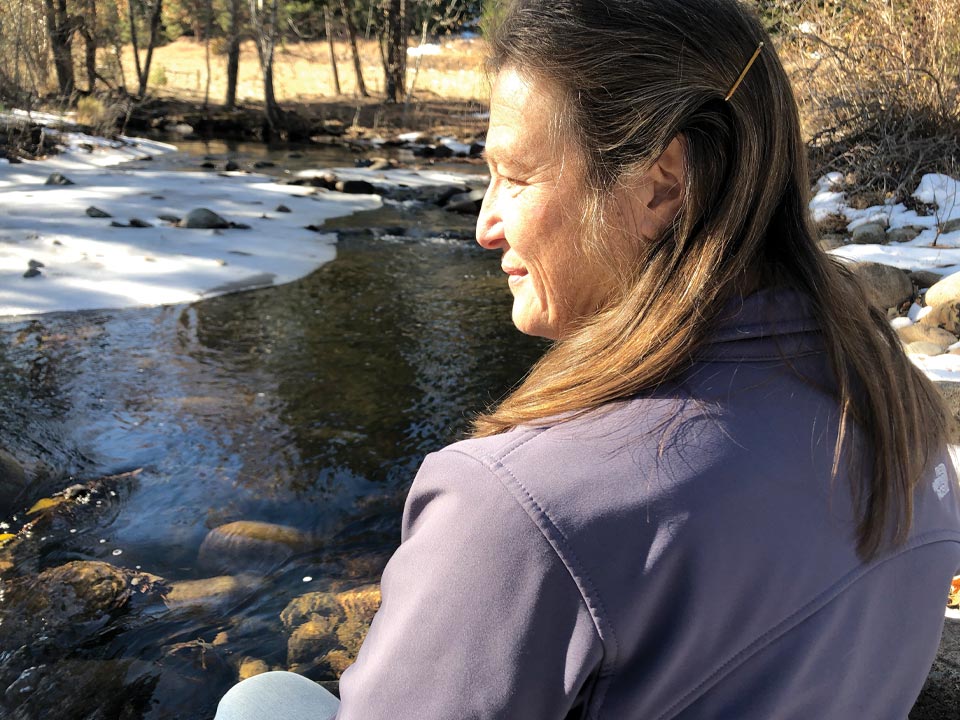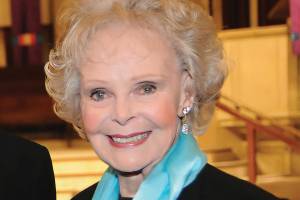By GAIL JOKERST
One of the first things Deborah Goslin learned when she initially heard of Forest Bathing was that, despite its name, it had nothing to do with immersing oneself in a tree-ringed body of water.
It did, however, involve another equally refreshing type of immersion—soaking up the quietude and beauty of a woodland atmosphere.
This immersion required using all of her five senses to laser-focus thought on the minutest details of what Mother Nature had put on display. No multitasking was allowed. Meaning, she didn’t also fish, hike, or count avian sightings.
She just concentrated on letting her senses draw her attention to what else inhabited the forest world with her.
Passion for Nature
According to Goslin, who describes herself as being, “passionate about plants and birds and anything to do with nature,” any natural outdoor setting can work, from a seascape to a desert.
Furthermore, it can work in any season, even winter, provided the locale is accessible and free from distractions.
For most people, it is more difficult than you might expect to walk in the woods exclusively to search for things to smell or textures to touch for an uninterrupted 20 minutes—where curiosity and a childlike sense of adventure replace self-imposed demands for productivity and efficiency.
Leaving Stress Behind
“Forest Bathing is similar to Tai Chi and yoga in that it makes you slow down and counteract the everyday rush-rush of life. It’s where yoga was 30 years ago. In a few years it will probably become more mainstream because it offers exactly what people need right now,” explains Goslin who makes her home along the North Burnt Fork in the Bitterroot.
“You leave the stress of everyday life and politics behind to be here and be present. For me, it’s been a pathway to health and well-being.”
A Career in Forestry
Considering that Goslin and her husband of 40 years, Bill, both attended forestry school in the Adirondacks, and both pursued forestry-related careers within the Bitterroot National Forest, it seems fitting that this new endeavor would appeal to her.
Ever since childhood, Goslin has been a bit of a wood sprite fascinated by hatching Monarch Butterflies and capturing tadpoles.
“I’ve always been happiest in the woods, discovering and looking at the small things,” she remarks. “It puts me in a super-relaxed state of mind.”
A vivid early memory lingers of her cupping a stranded baby bird in her six-year-old hands.
“It was a House Sparrow that couldn’t fly and landed in my dog’s water bowl,” she recalls. “When I picked it up, I felt awed to touch something so wild.”
Her trial foray into Forest Bathing gave Goslin a feeling of uplift and peace, much like when she held that House Sparrow.
The experience confirmed her belief that spending time outdoors wasn’t merely a good idea, it was critical to maintaining her sense of harmony.
Unsurprisingly, it changed the course of her life.
Changed Course in Life
Wanting to better understand and share Forest Bathing with others, Goslin read all she could about it.
The book that prompted her odyssey, The Biofilia Effect: A Scientific and Spiritual Exploration of the Healing Bond Between Humans and Nature, remains an inspiration. It led her to the Association of Nature and Forest Therapy (ANFT) headquartered in California, the organization that brought the concept of Forest Bathing to the United States.
Japanese Roots
Following its development in Japan during the 1980s, Forest Bathing, known as Shinrin-Yoku there and also as Nature or Forest Therapy, has garnered universal interest.
Today, some 1,100 ANFT Certified Forest Bathing Guides practice in 55 countries, based primarily in North and South America, Asia, and Europe.
Goslin is the first (and so far only) Montanan to have completed the ANFT’s nine-month practicum to join their ranks.
As it turned out, crafting a stronger bond with the natural world, along with a new career as a Forest Bathing Guide, suited her as comfortably as her favorite fleece jacket.
“It seemed like the natural next step for me. Things just fell into place,” says Goslin who enjoys taking small groups of people on safe, gentle walks that engage all the senses.
No Science Involved
These, incidentally, aren’t hikes or naturalist walks. No science is involved.
If you can put one foot in front of the other for a short distance, you can handle it. Just remember to dress comfortably, mute your cell phone, and stay openminded.
“People are used to being led, not guided, so instructions are kept purposely vague. The guide isn’t a leader or healer, but provides space for people to have their own experiences with nature,” clarifies Goslin.
“Walks begin with guided sensory awareness activities that establish contact with the present moment and place. Next comes a series of 15- to 20-minute exercises we call Invitations, which connect people more deeply with nature and the land.”
An example of an Invitation might be “Following the Scents.” Participants use their sense of smell to explore a place, noticing the different kinds of aromas present. Another example might be “What’s in Motion?”
This encourages people to see the different movements occurring around them that they may not have previously noticed. A third Invitation might include “Texture Gathering,” which involves feeling the roughness, smoothness, or perhaps slickness of a branch, leaf, flower, or rock.
“It’s a mind-space full of simplicity that enables you to feel joy and gratitude for the Earth and what we’ve received from it.
Maintaining Positivity
If our thoughts change to be more grateful, we will see the more positive side of life,” says Goslin. “We come to understand the lives of other beings and the interconnectedness between them.”
These mindfulness practices help relax and refocus individuals, whatever their background. Stress and fears seem to slip away.
At first, the Invitations might seem intimidating, or even weird. But once participants let go of preconceptions, they learn the experience is more about being than doing.
“It takes us from the tamed, everyday world to the untamed, wild world, the more-than-human world, where you see yourself as less separate from nature,” remarks Goslin. “With a childlike sense of wonder, you move into a realm permeated with mystery where anything can happen.”
No Previous Experience Necessary
An important aspect of these Invitations is that there is no right or wrong way to do them. No one judges you. No prior experience is needed, only the willingness to engage with the natural world and be present in the moment.
“Forest Bathing is not a destination; it’s a journey in which you find the key to who you are with all of your senses open. You slow down and tune into your own body and tune out the world. It includes rare moments of connecting with nature and your inner self,” concludes Goslin. “You see whole life histories lived on one tree trunk and realize we aren’t the only ones on the planet.” MSN
For more information, email [email protected] or call (406) 214-7879.








